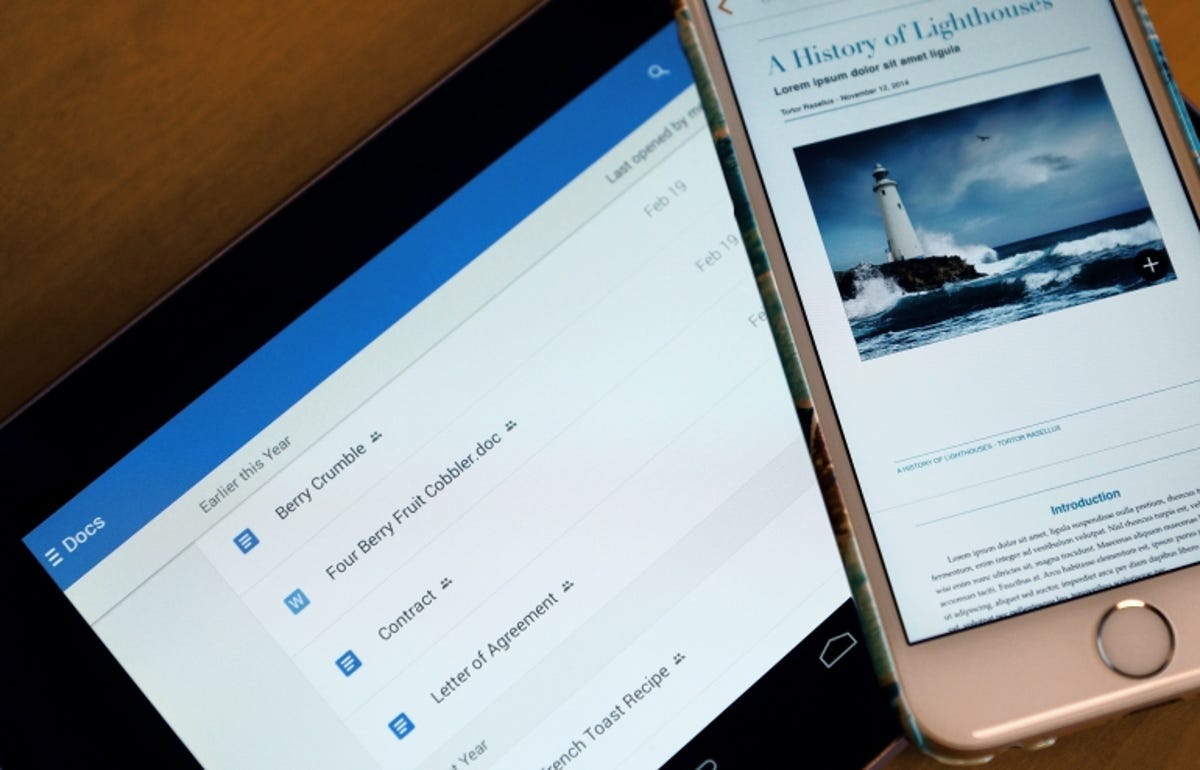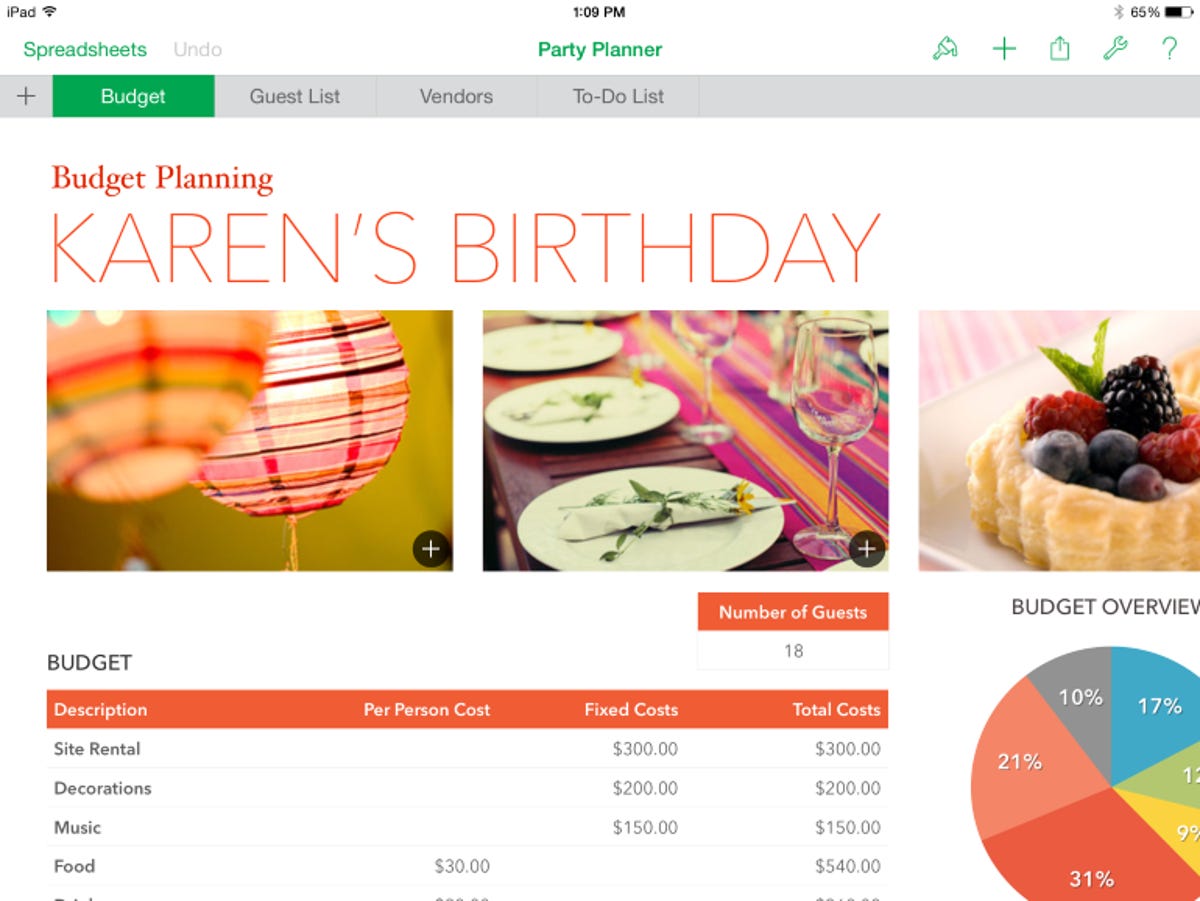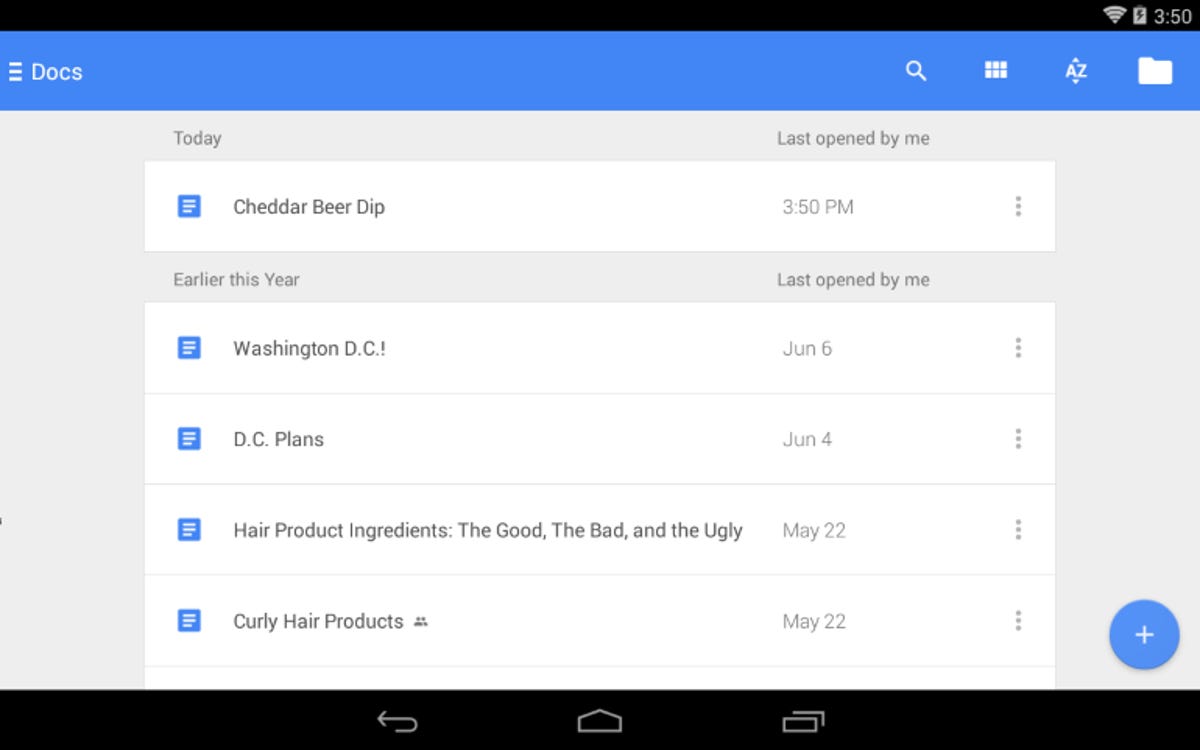
Sarah Mitroff/CNET
You no longer need to be tied to your computer to type out a text document or build a slideshow. Instead, there are many apps that help you edit those files straight from your phone or tablet. This year, both Microsoft and Google completely overhauled their mobile apps for Office and Drive, while Apple updated its iWork suite too, making small improvements here and there.
All three services have three apps; one for documents, one for spreadsheets and one for slideshow presentations. The apps are cross-platform, meaning you can use them to create and edit files on multiple devices. With so many similarities between these services, how do you pick the one for you? Let this article be your guide.
Need to work from your computer too? Check out CNET’s desktop productivity suite comparison.


Screenshot by Sarah Mitroff/CNET
Apple iWork
Apple’s biggest selling point for iWork is that on newer iPhones and iPads, the apps are completely free with the purchase of a new iPhone, iPad or Mac. The suite is made up of three individual apps, Pages , Numbers and Keynote , that you can download for iOS and Mac machines only
They aren’t exactly like their desktop counterparts, but the iOS apps carry many of the same features; enough to help you create what you need and edit any existing projects. Each app is designed with a clean, touch-friendly layout, putting common tools front and center. You also get many document, spreadsheet and presentation templates to help you create something new with little effort.
With the entire iWork suite, you can collaborate with up to 20 people, edit your files across devices and save all of your changes, including formatting, in iCloud so that you can access them anywhere. If you use a Mac running Yosemite and an iOS 8 device, you can easily switch between editing on both devices using Handoff too.
Another perk is that you can open Microsoft Office files and other file formats in the iWork apps, and you can export documents, spreadsheets and presentations to Microsoft Office as well.
Unlike Microsoft Office and Google Drive, you cannot access iWork applications from Android devices, not even using a mobile browser. That means iWork is only going to work if you use Apple devices.
Best for: Anyone who is already in the Apple ecosystem and wants to stay there, using software that seamlessly works with other Apple services.


Screenshot by Sarah Mitroff/CNET
Google Docs
Google’s mobile productivity suite has undergone several makeovers in the last few years, going from several apps to one, and back to separate apps again. In its current incarnation, there are three apps; Docs, Sheets and Slides . Here, I’ll refer to the system of all three apps, which are available for Android and iOS, as simply Google Docs.
On the face, the apps look pretty basic, with a sparse design and minimal features. However all three have common features you’d need for a document, spreadsheet or slideshow. One of our favorite features is that everything you create or edit is automatically saved as you make changes. Each app also works offline and syncs with your Google account when you connect to the Internet.
The three apps work together with the cloud storage service Google Drive, where you can store any files you create or edit. Additionally, you can edit Microsoft Office files with each app.
Like iWork, the Google Docs apps are completely free, though they are missing some of the more advanced tools you’ll find in Office and iWork, such as templates. Another downside of Drive is that while all of your files and editing apps exist in one place on the Web, you have to download each individual app on your phone or tablet if you need to edit documents, spreadsheets and presentations.
Best for: Because of its limited features, the Google Docs apps are only worth using if you need to do quick edits to existing files from your Google account.


Screenshot by Sarah Mitroff/CNET
Microsoft Office
Microsoft Office recently overhauled its mobile apps, making them free to use for all. However, you’ll need to pay an extra fee for advanced features. Earlier this year, Microsoft released full-featured Word, Excel, and PowerPoint apps for the iPad, and now they are making their way to iPhones, Windows Phone and Android devices. The updated Android apps are set to launch in early 2015.
The apps are well-designed, with user-friendly layouts and the basic editing tools you need. Within Word, Excel and PowerPoint, you can sign in with your Microsoft account to view and edit existing files stored in your OneDrive account. You can also open files stored locally on your device and make edits to files shared with you from other Office users.
One perk of Office is that each app comes with several templates that help you create new documents or presentations, complete with colorful formatting. While you can make simple changes to your existing or shared files, you’ll need an Office 365 subscription (starting at $69.99 per year) to make advanced changes, such as changing a document formatting or creating a custom table in Excel.
Best for: With solid creation and editing tools, the Microsoft Office apps are great tools for anyone who needs a mobile editing suite. However, Office 365 subscribers get the best experience, with easy access to their files and extra editing options.
Alternatives to consider
Apple, Microsoft and Google make the most popular mobile productivity suites, but their apps aren’t the only ones you can use for creating and editing projects.
One alternative is WPS Office (formerly Kingsoft Office), a completely free office suite that’s available for Android, iOS, Windows and Linux. The single app has tools for building spreadsheets, slideshows and text documents. It also plugs into many cloud services, such as Drive, Dropbox and OneDrive, so you can save and open documents.
Another option is Polaris Office, which has the same features as the other productivity suites, plus you can use it to view and share PDFs. It’s available on the Web, and for iOS and Android.




